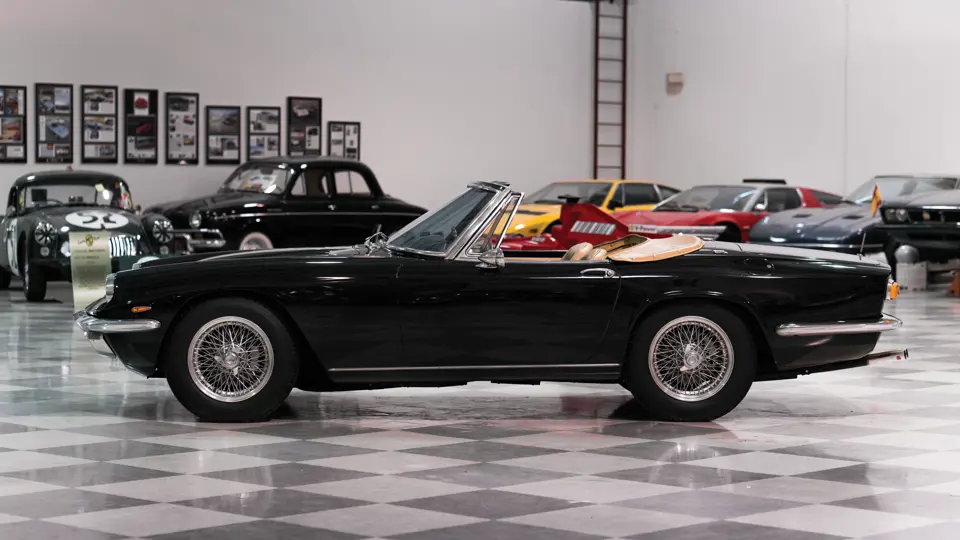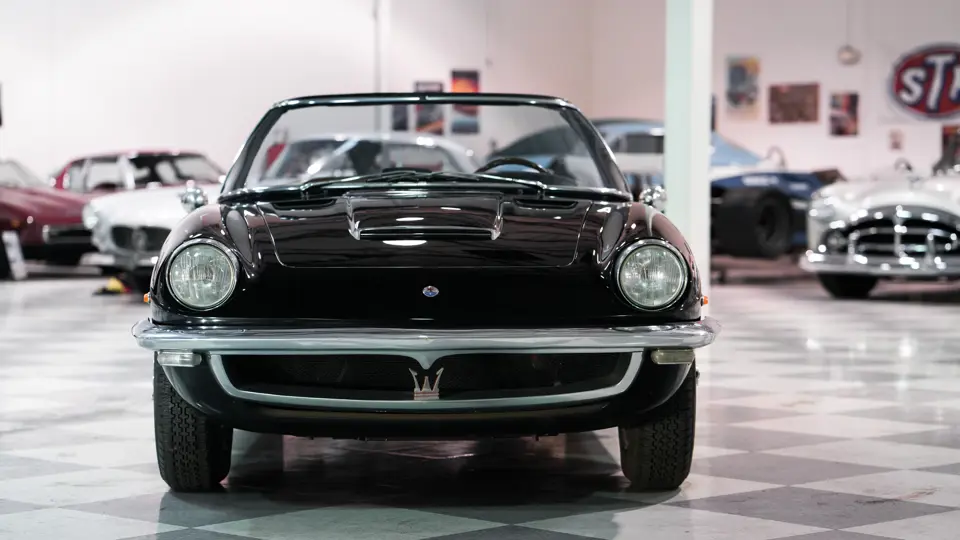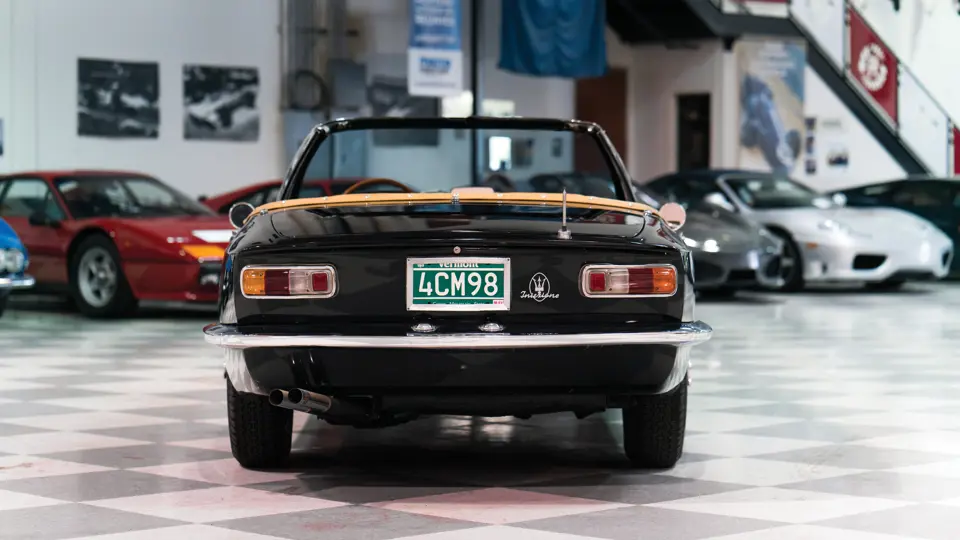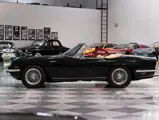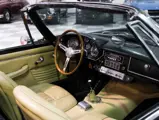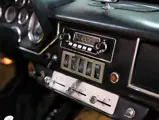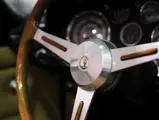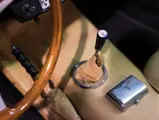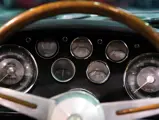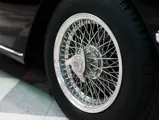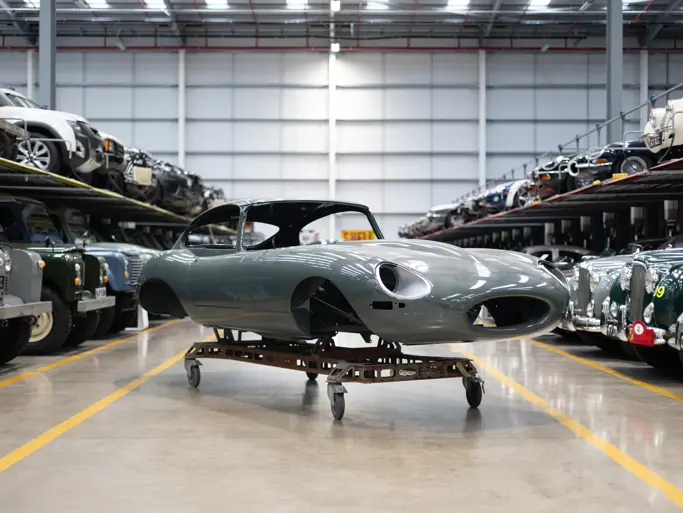
1965 Maserati Mistral 3.5 Spyder by Frua
{{lr.item.text}}
$412,500 USD | Sold
The Riverside International Automotive Museum Collection
{{bidding.lot.reserveStatusFormatted}}
- Offered from the Riverside International Automotive Museum Collection
- One of only 120 Mistral Spyders built
- Retains a rare factory hardtop
235 bhp, 3,485 cc DOHC inline six-cylinder engine with triple Weber 42 DCOE 8 carburetors, five-speed ZF manual transmission, independent front suspension with coil springs, rigid rear axle with semi-elliptical leaf springs, and four-wheel disc brakes. Wheelbase: 94.48 in.
Looking to build upon the success of the 3500 GT and Sebring, Maserati commissioned Pietro Frua to design a new body to be placed upon an updated version of the Tipo 109 chassis. At the suggestion of Colonel John Simone, the French Maserati importer, the car was named the Mistral, after the strong winds blowing from the Mediterranean coast in the South of France.
The car’s name was meant to invoke a sense of speed, and the car itself certainly lived up to its promise. This would be Maserati’s last car powered by the renowned and well-proven straight-six engine, which had descended from the 350S sports racer of the 1950s. A Salisbury rear-axle distributed the engine’s power to the rear wheels and was managed through a ZF five-speed manual gearbox.
Aesthetically, the Mistral was similar in length to its Sebring predecessor and boasted a much lither and rounder profile. The relatively long bonnet was accented with a small air scoop, slim bumper, and a split air intake. Typical of Italian sports car construction at the time, the body was constructed in steel, whilst the doors, bonnet, and boot lid were fashioned out of aluminum. When unveiled, it was considered by many to be one of Frua’s finest designs.
First unveiled at the Turin Motor Show in November of 1963, the Mistral proved to be an instant success, remaining popular throughout its production until 1970. By the time production had concluded, 828 Mistral coupes were built alongside 120 Mistral Spyders. Of the 120 Spyders constructed, just 14 were produced in right-hand drive configuration, making them exceedingly rare today.
According to information provided by Maserati Classiche, this particular factory right-hand drive Mistral 3.5 Spyder was originally built on 29 July 1965 and delivered to London, finished in Nero over a white leather interior. While it is not known when the car was exported to the United States, it is believed to have been converted to its current, left-hand drive configuration around that time. In April of 1973, the car was acquired by William P. Beriling of Marblehead, Massachusetts, from Paul C. Setze, also of Marblehead. Beriling would go on to keep the car for over 30 years. By that time, its original fuel-injection setup had been traded for triple Weber carburetors that remain with the car today.
The Mistral Spyder was sold from Breiling through Marc Sonnery and Ed Waterman of Motorcar Gallery in Fort Lauderdale, Florida, to Doug Magnon in early 2003 and was shipped to Riverside, California. Once the Riverside International Automotive Museum was founded in 2006, the car quickly became a crowd favorite at the museum not only for its rarity, but also for its sheer character and patina. Thought to have never been fully restored, it sports the patina similar to that of an old baseball glove; worn-in with loving care but still able to be used with pride. Adding to the car’s overall desirability, it boasts a matching hardtop, a very rare option thought to be delivered new with the car.
For the new owner, this Mistral presents a wealth of possibilities. An ideal basis for a full restoration to original specifications, the car would, without a doubt, be truly stunning in its original right-hand drive configuration, finished in Black over white with its original matching hardtop. It would also be an ideal driver with charming patina, ideal for the occasional top-down summer jaunt through the countryside. Whichever decision is made, there is no doubt that this Mistral would be a welcome addition to any collection of Maseratis or 1960s Italian sports cars.
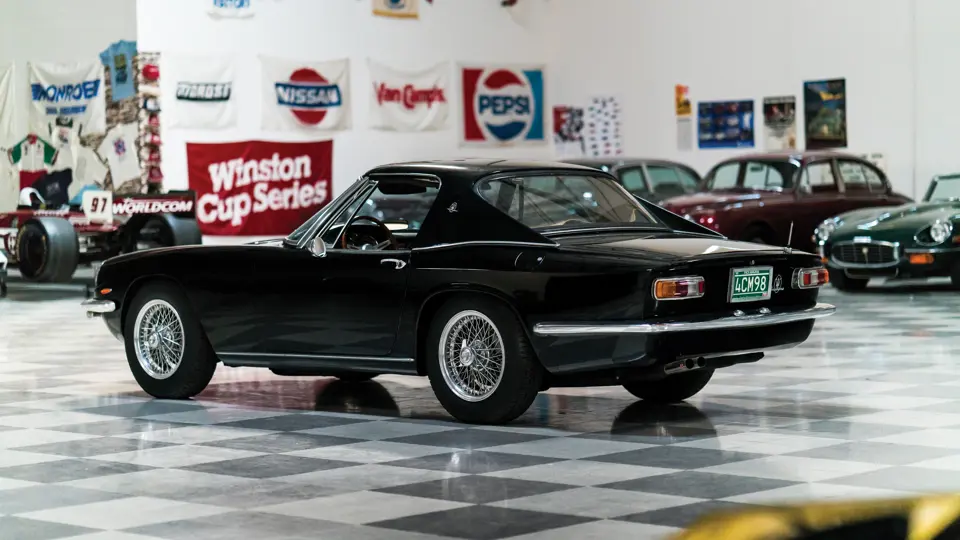



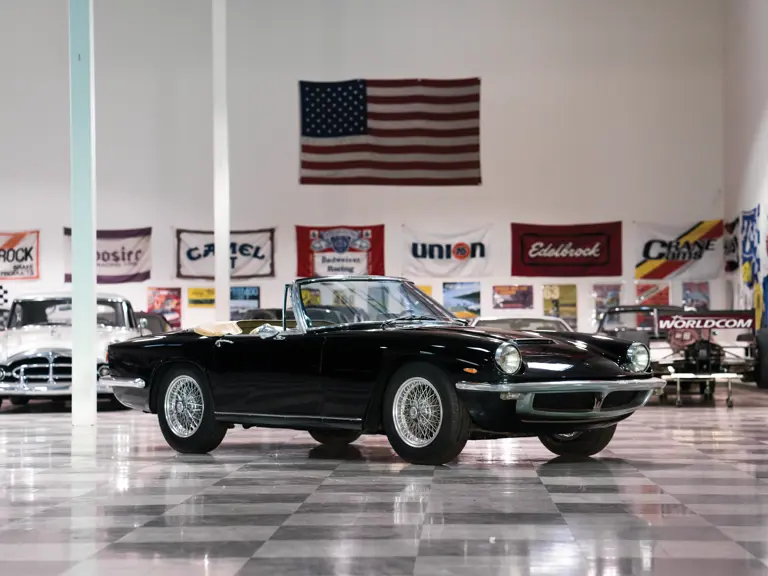
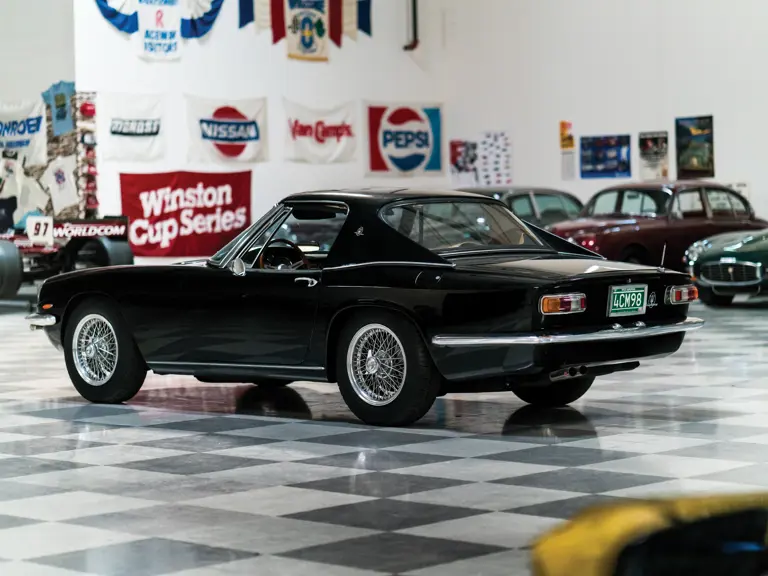
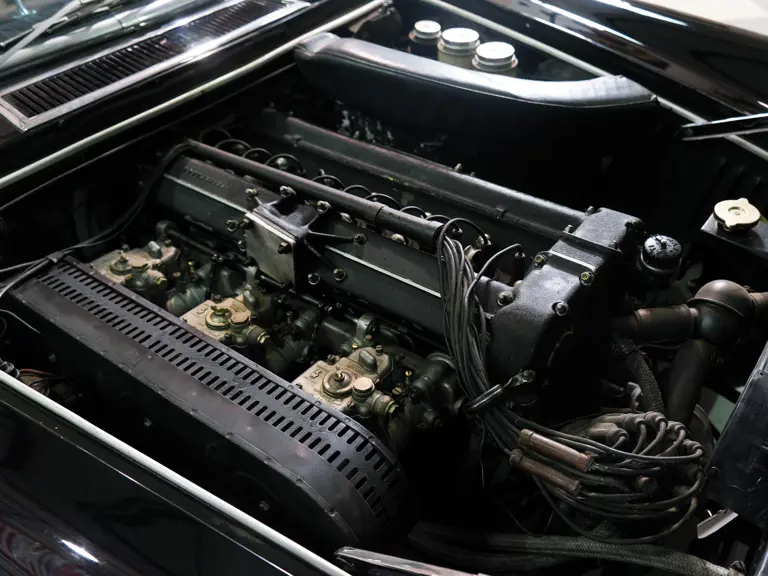
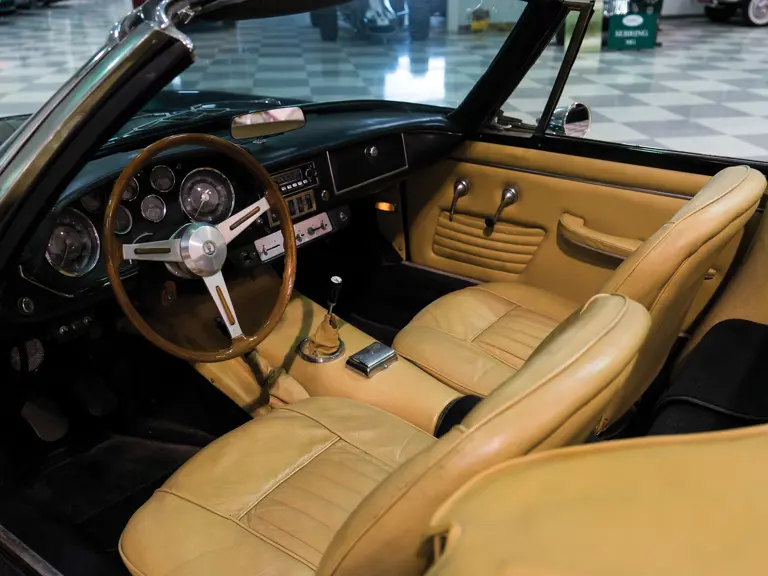
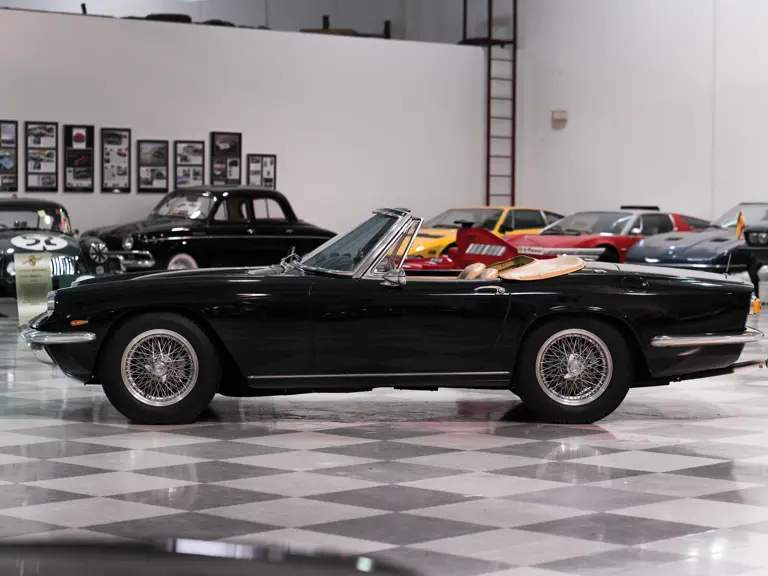
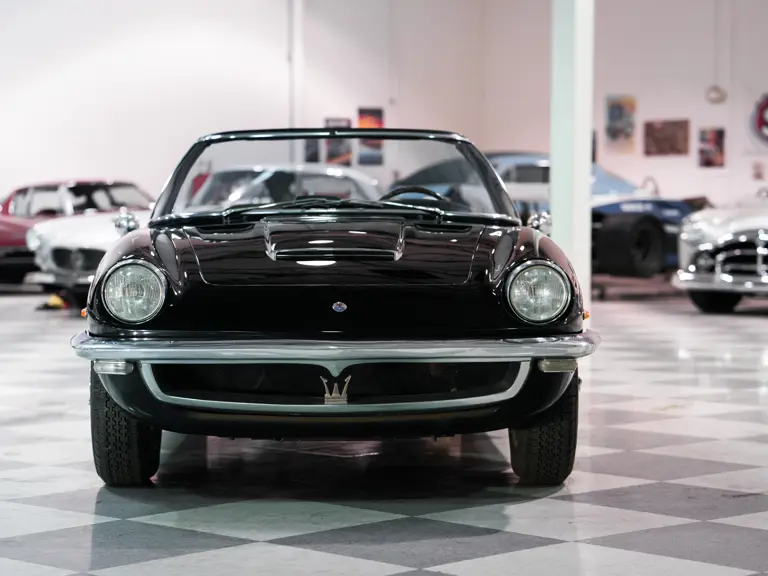
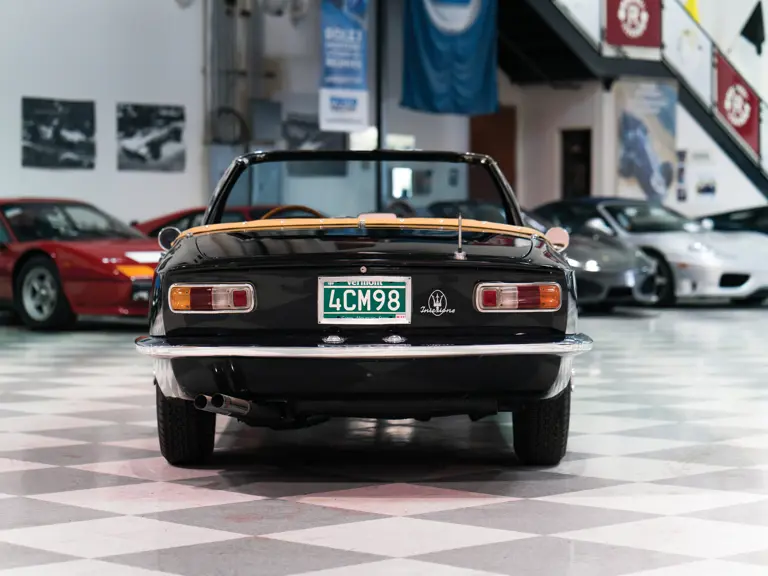
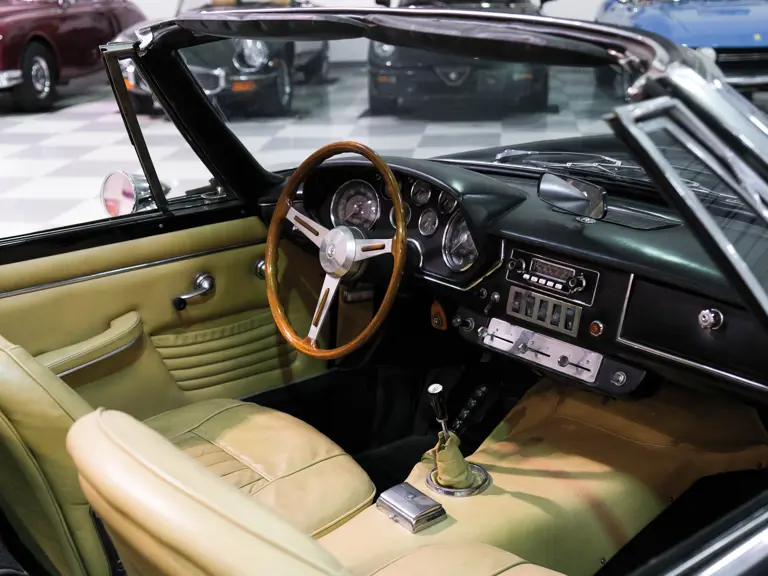
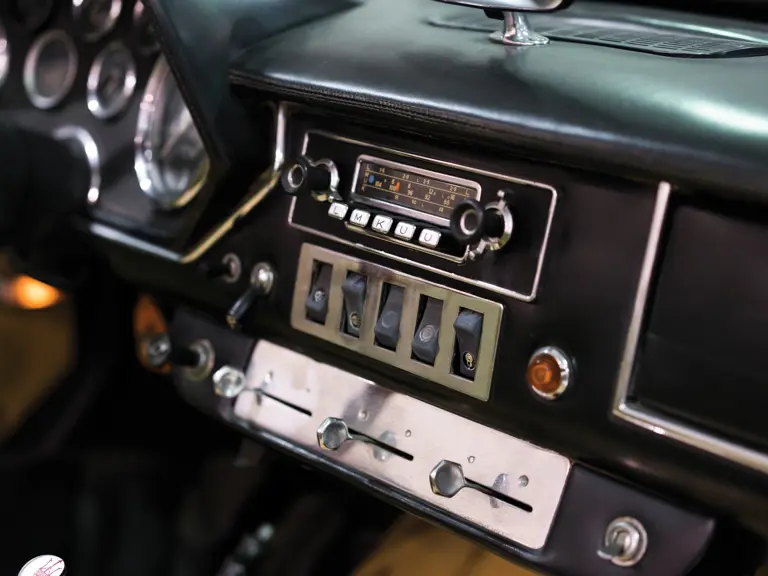
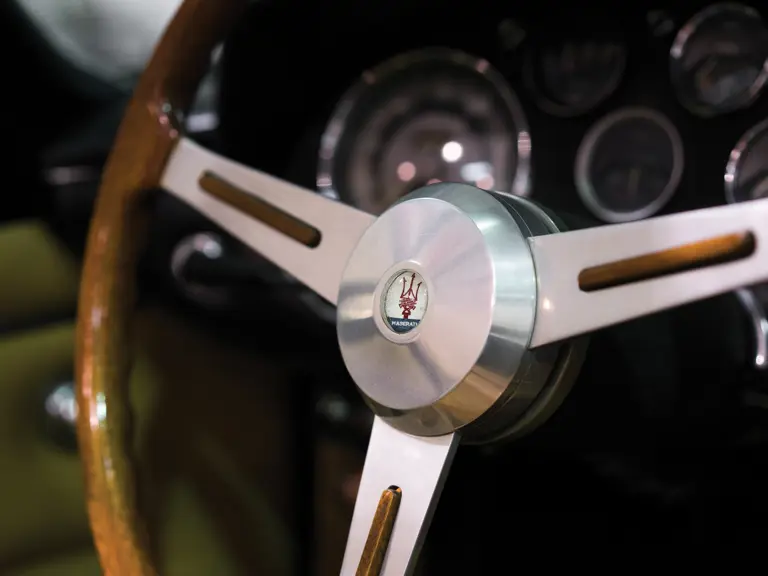
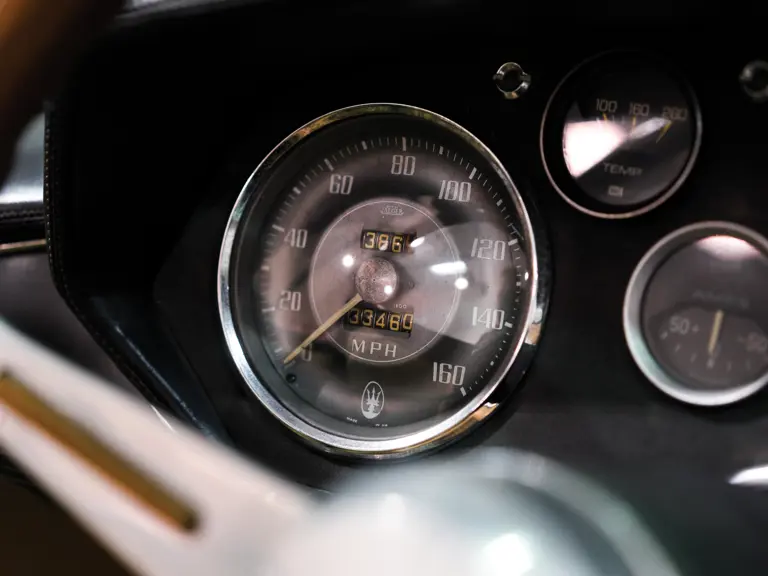


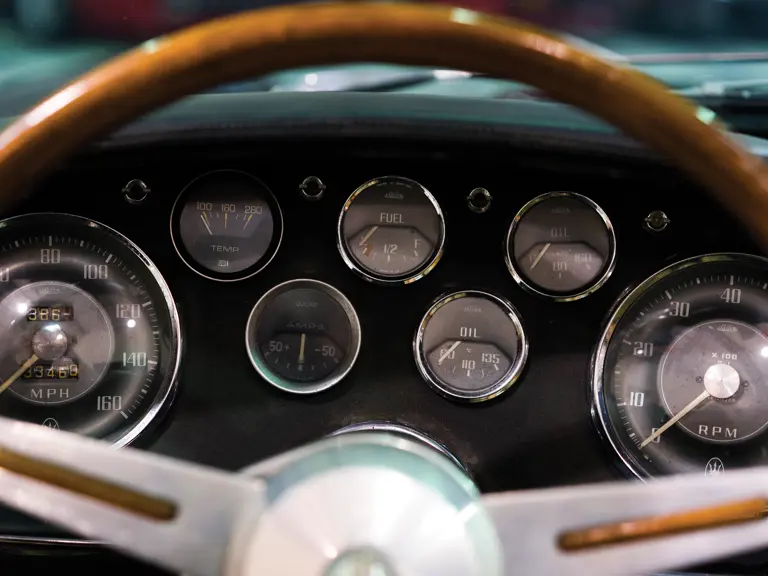
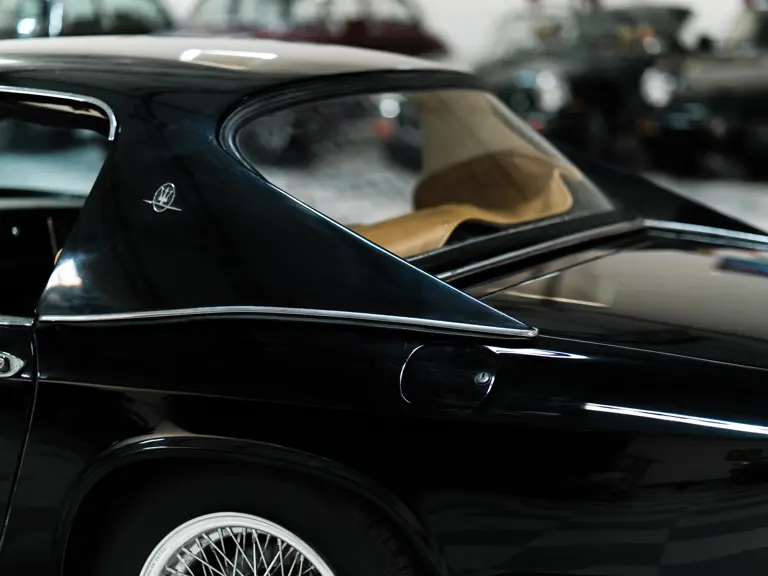
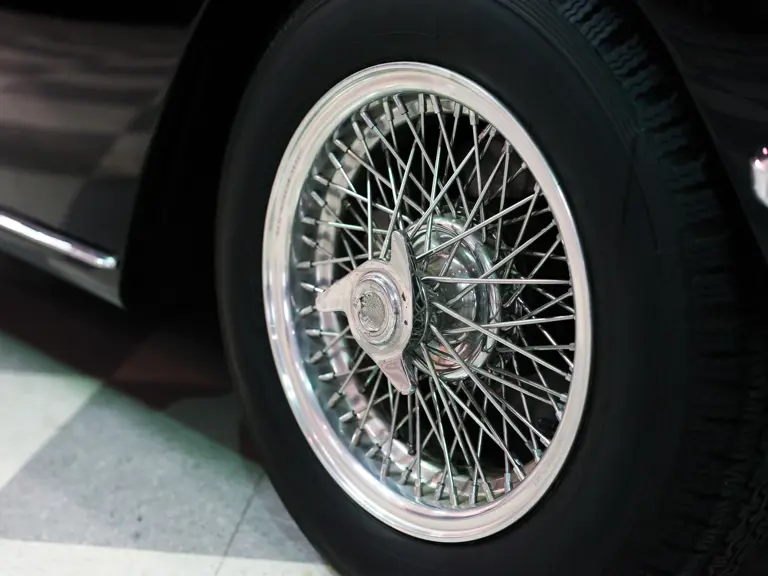
 | Monterey, California
| Monterey, California
